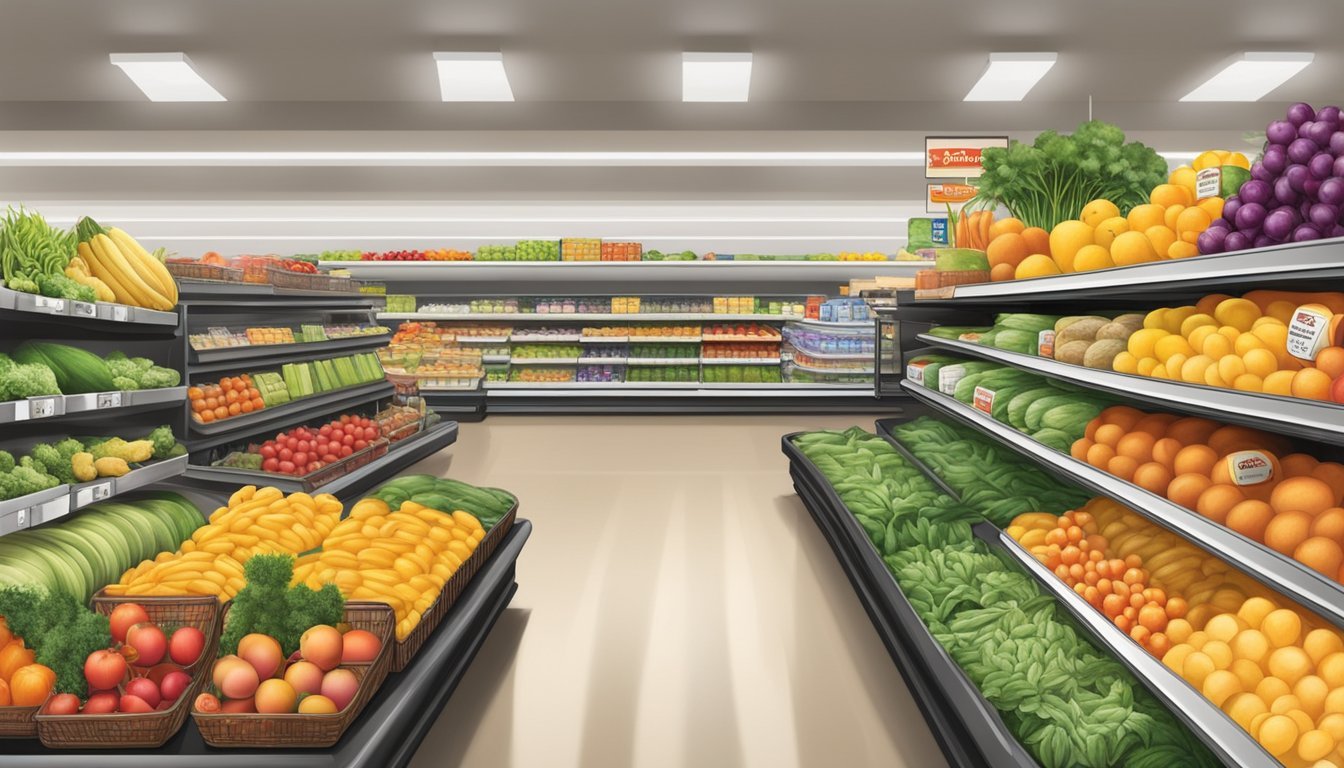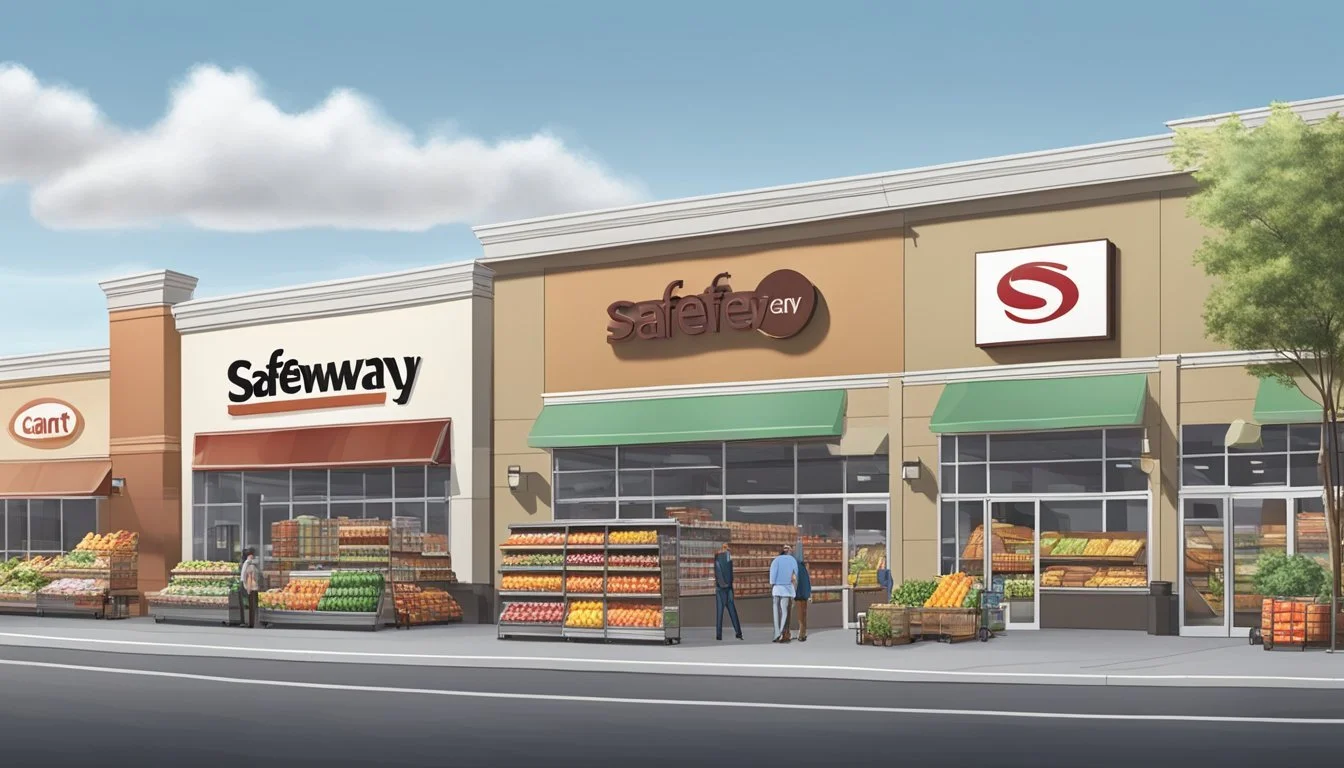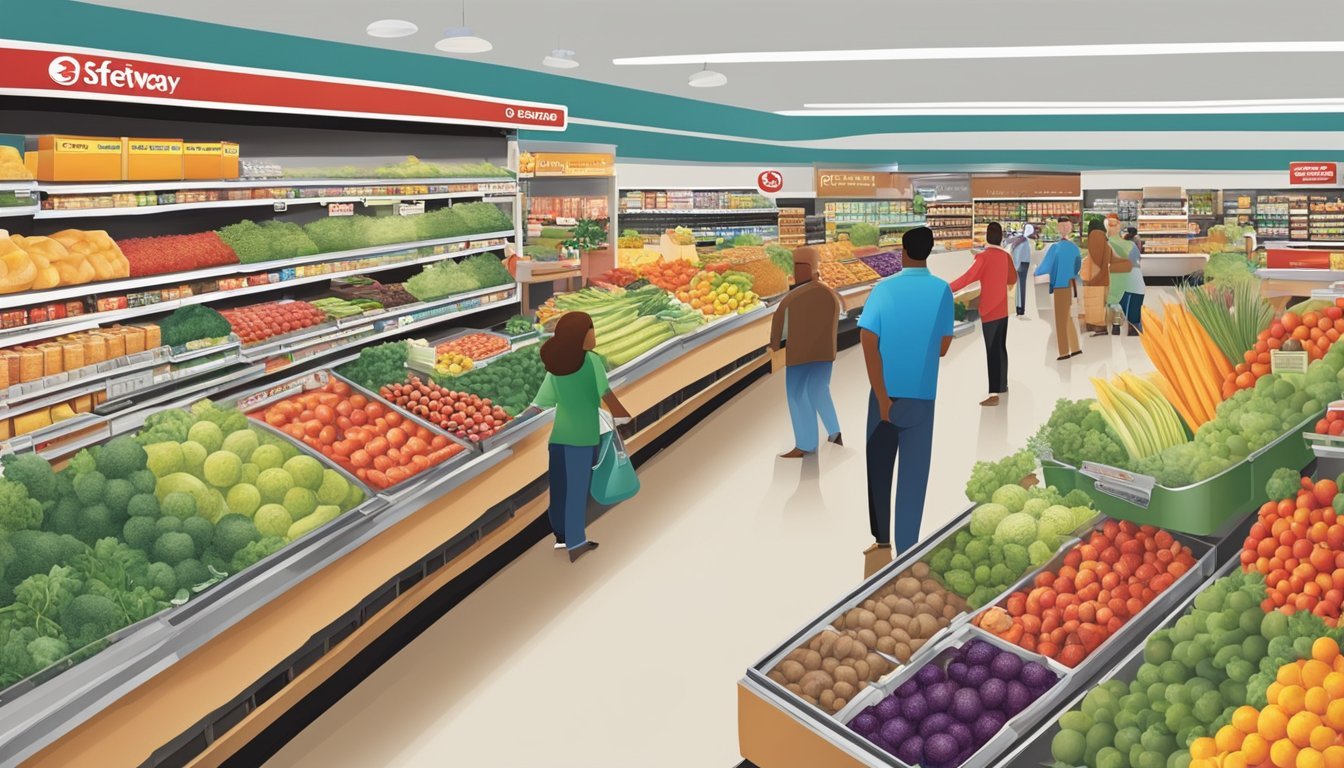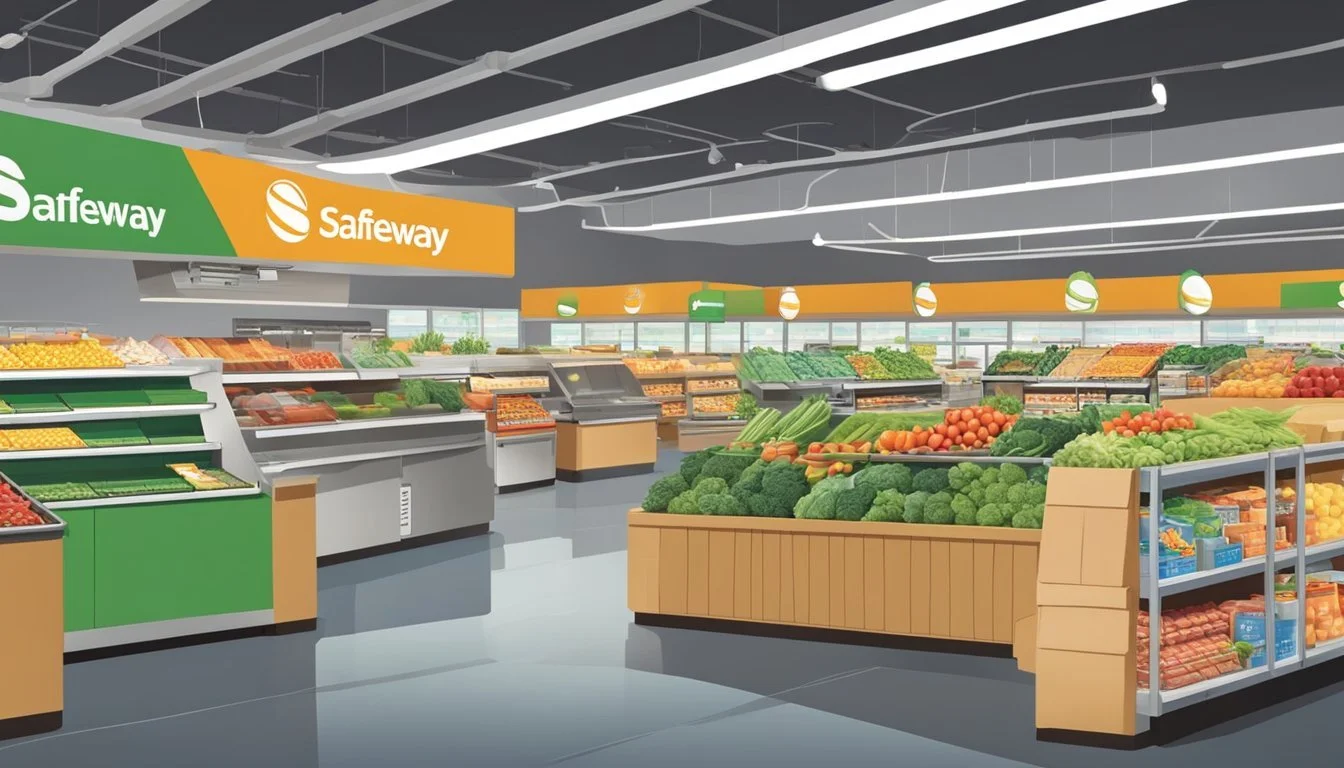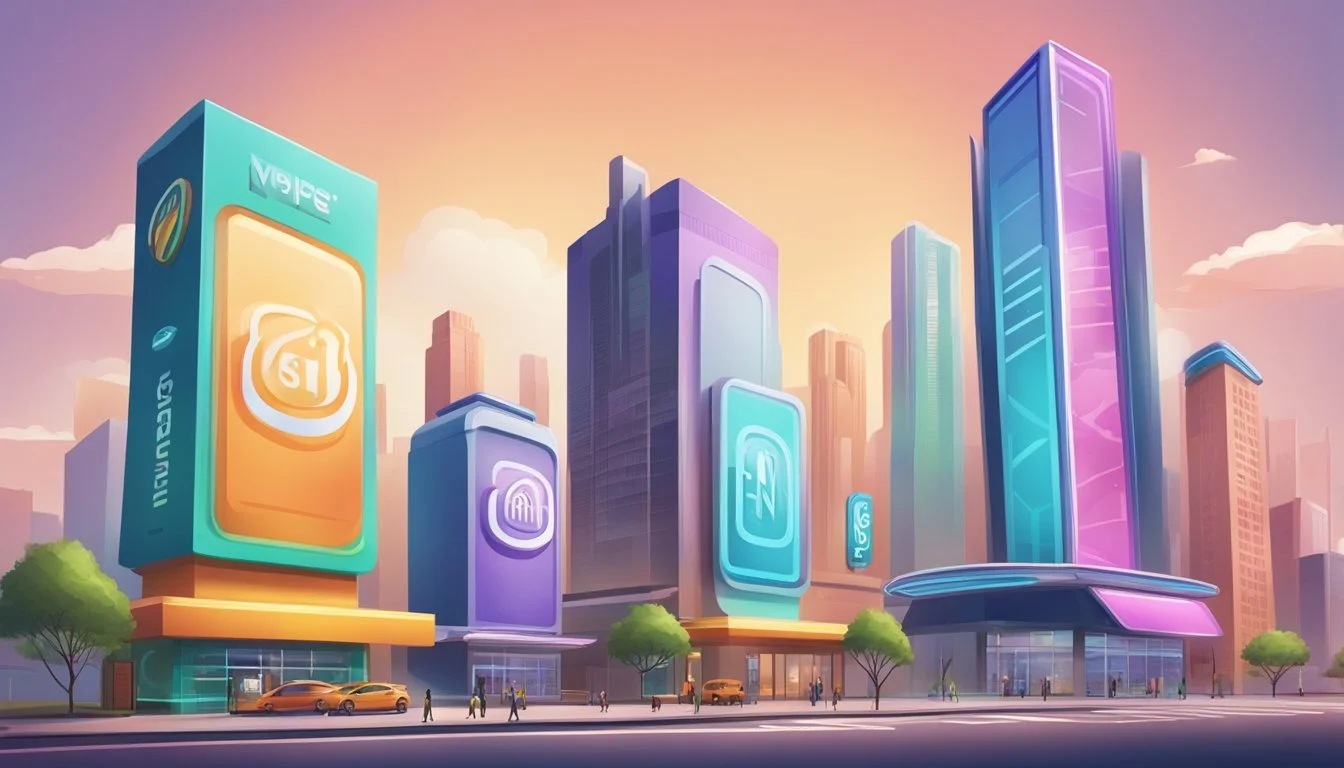Giant Food vs Safeway
A Comprehensive Comparison of Price, Quality, and Selection
Grocery shopping is a crucial part of everyday life, and choosing the right store can significantly impact your budget and experience. Giant Food and Safeway are two popular grocery chains that compete for customers' loyalty. Both stores offer a wide range of products, but they differ in several key aspects.
Giant Food is generally cheaper than Safeway across most shopping categories. A comparison of prices in common grocery departments shows that Giant offers lower prices in 6 out of 8 categories. This price advantage makes Giant an attractive option for budget-conscious shoppers looking to stretch their dollars further.
While price is a major factor, it's not the only consideration when choosing a grocery store. Safeway has been noted for having fewer product recalls in recent years compared to Giant, which may indicate better quality control. Additionally, factors such as store location, product selection, customer service, and shopping atmosphere can all play a role in determining which store provides the best overall value for individual shoppers.
History and Background of Giant Food and Safeway
Giant Food and Safeway are two prominent supermarket chains with deep roots in American retail history. Both companies have evolved significantly since their founding, adapting to changing consumer needs and market conditions over the decades.
Giant Food: From Inception to Today
Giant Food traces its origins to 1936 when David Javitch opened a small store in Lewistown, Pennsylvania. Initially called the Giant Shopping Food Center, it marked a shift from Javitch's earlier Carlisle Meat Market. The company expanded steadily in the following years.
Giant Food became a major player in the Washington, D.C. area and along the East Coast. The chain introduced innovative concepts like in-store pharmacies and larger store formats. By the 1990s, Giant had established itself as a leading supermarket chain in the Mid-Atlantic region.
In 1998, Dutch company Royal Ahold acquired Giant Food, ushering in a new era of growth and modernization. Today, Giant Food operates hundreds of stores across several states, offering a wide range of products and services to meet diverse customer needs.
Safeway: Historical Overview
Safeway's story began in 1915 when Marion Barton Skaggs purchased a small grocery store in American Falls, Idaho. Skaggs had a revolutionary vision for his time: offering customers the ability to purchase groceries for cash instead of credit.
The company grew rapidly through acquisitions and new store openings. By 1926, Safeway had 322 stores across several states. The chain continued to innovate, introducing concepts like sell-by dates on perishable products in the 1930s.
Safeway expanded nationally and internationally in the following decades. The company faced challenges in the 1980s and 1990s but rebounded through strategic restructuring. In 2015, Safeway merged with Albertsons, creating one of the largest food and drug retailers in the United States.
Today, Safeway operates over 900 stores across the country. The chain offers a variety of departments, including bakery, deli, pharmacy, and fuel centers, adapting to meet modern consumer preferences.
Store Locations and Accessibility
Giant Food and Safeway have distinct geographic footprints, influencing their accessibility for consumers across different regions. Their store locations play a crucial role in market presence and customer convenience.
Analyzing Giant Food's Reach
Giant Food primarily serves the Mid-Atlantic region of the United States. The chain operates over 160 supermarkets across Maryland, Virginia, Delaware, and Washington D.C.
In Maryland, Giant Food maintains a strong presence with numerous stores in Baltimore, Columbia, and the D.C. suburbs. Virginia hosts many Giant locations, particularly in Northern Virginia and the Richmond area.
Delaware features several Giant Food stores, mainly in the Wilmington region. Washington D.C. itself has multiple Giant supermarkets serving various neighborhoods.
Exploring Safeway's Geographic Presence
Safeway boasts a wider geographic spread compared to Giant Food. The chain operates over 900 stores across 17 states and the District of Columbia.
Safeway has a significant presence on the West Coast, with numerous stores in California, Oregon, and Washington. The chain also serves Mountain states like Colorado, Wyoming, and Montana.
In the Mid-Atlantic, Safeway competes directly with Giant Food in Maryland, Virginia, and D.C. The chain extends its reach to the Southwest, with locations in Arizona and New Mexico.
Safeway's broad distribution allows it to cater to diverse markets, from urban centers to rural communities across the country.
Product Range and Quality
Giant Food and Safeway both offer extensive product selections to cater to diverse customer needs. Each store features a mix of national brands, private labels, and specialty items across various categories.
Giant Food's Product Assortment
Giant Food boasts a wide array of products, emphasizing fresh produce and high-quality meats. Their produce section showcases a variety of fruits and vegetables, including organic options. The meat department offers fresh cuts, poultry, and seafood.
Giant's dairy section includes milk, cheese, and yogurt from both national and local brands. Their dry goods aisles feature pantry staples, baking ingredients, and snacks. The frozen foods section provides convenient meal options and frozen vegetables.
The store's private label, Nature's Promise, offers organic and natural products across multiple categories. Giant Food also carries specialty items like international foods and gluten-free options to meet diverse dietary needs.
Safeway's Product Offerings
Safeway presents a comprehensive product range, focusing on quality and variety. Their produce department offers a selection of fresh fruits and vegetables, with both conventional and organic choices available.
The meat counter at Safeway features fresh cuts, poultry, and seafood. Their butchers can provide custom cuts upon request. Safeway's dairy section includes a range of milk, cheese, and yogurt options.
Safeway's private label, Signature Select, spans various product categories, offering customers quality alternatives to national brands. The store's dry goods section includes pantry staples, baking needs, and snack foods.
Frozen foods at Safeway encompass quick meal solutions, ice cream, and frozen produce. The store also caters to specialty diets with gluten-free, vegan, and international food options.
Pricing Strategies and Cost Efficiency
Giant Food and Safeway employ distinct pricing approaches to attract customers and remain competitive. These strategies impact overall affordability and potential savings for shoppers.
Pricing at Giant Food
Giant Food focuses on everyday low prices across multiple product categories. The chain offers competitive pricing on staple items and household essentials. Giant's strategy includes:
• Regular sales and promotions on popular items • A robust loyalty program with personalized discounts • Price matching guarantees against major competitors
Giant tends to be the cheaper option in 6 out of 8 common shopping categories compared to Safeway. This pricing approach can lead to significant savings, potentially $1,500 to $2,000 per year for many families.
Giant also utilizes loss leaders, pricing certain products below cost to draw customers into stores. This tactic aims to increase overall sales volume and customer loyalty.
Safeway's Pricing Model
Safeway adopts a different pricing strategy, often featuring higher regular prices offset by frequent sales and promotions. Key aspects include:
• Weekly ad circulars with rotating discounts • A "Just for U" loyalty program offering personalized deals • Emphasis on quality and selection, particularly in produce and prepared foods
Safeway's prices are generally higher than Giant's, with exceptions in dairy products and select specialty items. The chain focuses on creating a premium shopping experience, which can justify slightly higher average prices for some consumers.
Safeway's approach may appeal to shoppers who prefer to stock up during sales or those willing to pay more for perceived higher quality or convenience. However, budget-conscious customers might find better everyday value at Giant Food.
Customer Experience and Service
Giant Food and Safeway both prioritize customer satisfaction, but their approaches differ. Each chain has implemented unique strategies to enhance the shopping experience and meet customer needs.
Analyzing Giant Food's Customer Service
Giant Food emphasizes efficiency and convenience. The chain offers self-checkout options to reduce wait times during peak hours. Their mobile app allows customers to create shopping lists and access digital coupons. Giant's prepared foods section has expanded, featuring a variety of ready-to-eat meals for busy shoppers.
Surveys indicate high ratings for Giant's cleanliness and product availability. The store's layout is designed for easy navigation, with clear signage guiding customers to different departments. Giant's loyalty program rewards frequent shoppers with personalized deals and gas points.
Safeway's Approach to Customer Experience
Safeway focuses on personalized service and product quality. Their staff undergoes extensive training to assist customers with product inquiries and special requests. The chain has invested in grocery delivery options, partnering with third-party services to offer same-day delivery in many areas.
Safeway's pharmacy department receives praise for its attentive service and short wait times. The store's bakery and deli sections are known for their high-quality prepared foods and custom orders. Safeway's mobile app includes features like digital receipts and the ability to schedule pickup times for online orders.
Customer surveys highlight Safeway's commitment to accommodating dietary restrictions, with clearly labeled organic and allergen-free products throughout the store.
Grocery Chain Comparative Studies
Numerous studies have examined how Giant Food and Safeway stack up against other major grocery chains in terms of pricing, quality, and customer satisfaction. These analyses provide valuable insights for consumers looking to maximize value.
Competitive Analysis with Other Chains
Walmart consistently ranks as one of the most affordable grocery options, with prices typically 16% below average. Food Lion follows closely behind at 12% below average. Giant Food and Safeway face stiff competition from these value-oriented chains.
Aldi, Lidl, and Trader Joe's have also gained market share with their low-cost, high-quality store brands. Publix and Wegmans score highly for customer service and store experience, though their prices tend to be higher.
Kroger, the largest traditional supermarket chain, competes directly with Giant and Safeway in many markets. Their pricing generally falls between discount and premium options.
Consumer Reports and Market Surveys
Consumer Reports surveys indicate that Wegmans, Publix, and Trader Joe's consistently rank highest in overall customer satisfaction. These chains excel in produce quality, store cleanliness, and helpful staff.
Giant Food and Safeway typically score in the middle range for most factors. They perform adequately but rarely stand out as top performers or lowest-ranked options.
Price comparison studies show that a family spending $250 weekly on groceries could save $1,500 to $2,000 annually by choosing the most competitive chains in their area. This highlights the significant impact store choice can have on household budgets.
Membership Programs and Exclusive Deals
Both Giant Food and Safeway offer loyalty programs to reward customers and provide special discounts. These programs can lead to significant savings for regular shoppers.
Giant Food's Loyalty Offerings
Giant Food's membership program is called Giant Card. It's free to join and provides customers with various benefits. Members earn points on purchases, which can be redeemed for gas savings or grocery discounts.
Giant Card holders get access to digital coupons and personalized offers based on shopping habits. The program also features weekly specials exclusively for members.
Giant Food occasionally runs promotional periods with bonus point offers, allowing customers to accumulate rewards faster. Members can track their points and savings through the Giant Food mobile app.
Safeway's Membership Advantages
Safeway's loyalty program is known as Just for U. This free program offers personalized deals and digital coupons to members. Shoppers can load offers directly to their account for easy redemption at checkout.
Just for U members receive exclusive pricing on select items throughout the store. The program includes a gas rewards component, where customers can earn points for fuel discounts at participating stations.
Safeway's app allows members to create shopping lists, view weekly ads, and clip digital coupons. The company sometimes offers special promotions, such as bonus points on certain products or categories.
Sustainability and Corporate Responsibility
Both Giant Food and Safeway have made strides in sustainability and corporate responsibility. Their initiatives aim to reduce environmental impact and contribute positively to communities.
Giant Food's Environmental Initiatives
Giant Food has implemented several eco-friendly practices. The company focuses on reducing food waste through partnerships with local food banks and composting programs. They've installed energy-efficient lighting and refrigeration systems in stores to lower electricity consumption.
Giant Food has also expanded its recycling efforts. Customers can recycle plastic bags and packaging at many store locations. The company uses reusable bags and encourages shoppers to bring their own.
To promote sustainable products, Giant Food has increased its organic and locally-sourced offerings. They work with regional farmers to stock fresh, in-season produce with reduced transportation emissions.
Safeway's Social Responsibility
Safeway emphasizes community engagement in its corporate responsibility efforts. The company runs a foundation that supports local causes, focusing on hunger relief, education, and health programs.
Safeway has established strict food safety protocols to protect customers. They conduct regular audits and maintain rigorous quality control standards. When necessary, Safeway issues prompt recalls to ensure consumer safety.
The company promotes diversity and inclusion in its workforce. Safeway offers employee training programs and career development opportunities. They also support veteran hiring initiatives.
Safeway has made commitments to sustainable sourcing. They work to ensure their seafood comes from responsible fisheries and have policies to improve animal welfare in their supply chain.
Future Outlook and Industry Trends
The grocery industry is rapidly evolving with technological advancements and changing consumer preferences. Major supermarket chains are adapting to stay competitive and meet shoppers' needs.
Innovations in the Supermarket Space
AI and automation are transforming grocery operations. Self-checkout kiosks and mobile apps streamline the shopping experience. Some stores now offer cashierless technology, allowing customers to grab items and leave without stopping at a register.
Personalization is becoming more sophisticated. Loyalty programs use data analytics to provide tailored promotions and product recommendations. Digital shelf labels enable dynamic pricing based on demand and inventory levels.
Sustainability initiatives are gaining traction. Grocers are reducing plastic packaging, sourcing more local produce, and implementing energy-efficient systems. Some chains now offer bulk food sections to minimize waste.
Predicting the Evolution of Grocery Shopping
Online grocery shopping is expected to continue growing. Major chains are investing in e-commerce platforms and delivery services to compete with pure-play online retailers.
Smaller format stores may become more prevalent in urban areas. These shops cater to frequent, quick trips rather than large weekly hauls.
The lines between grocery and foodservice are blurring. More supermarkets are expanding their prepared food offerings and adding in-store dining options. This trend aims to capture a larger share of consumers' food budgets.

